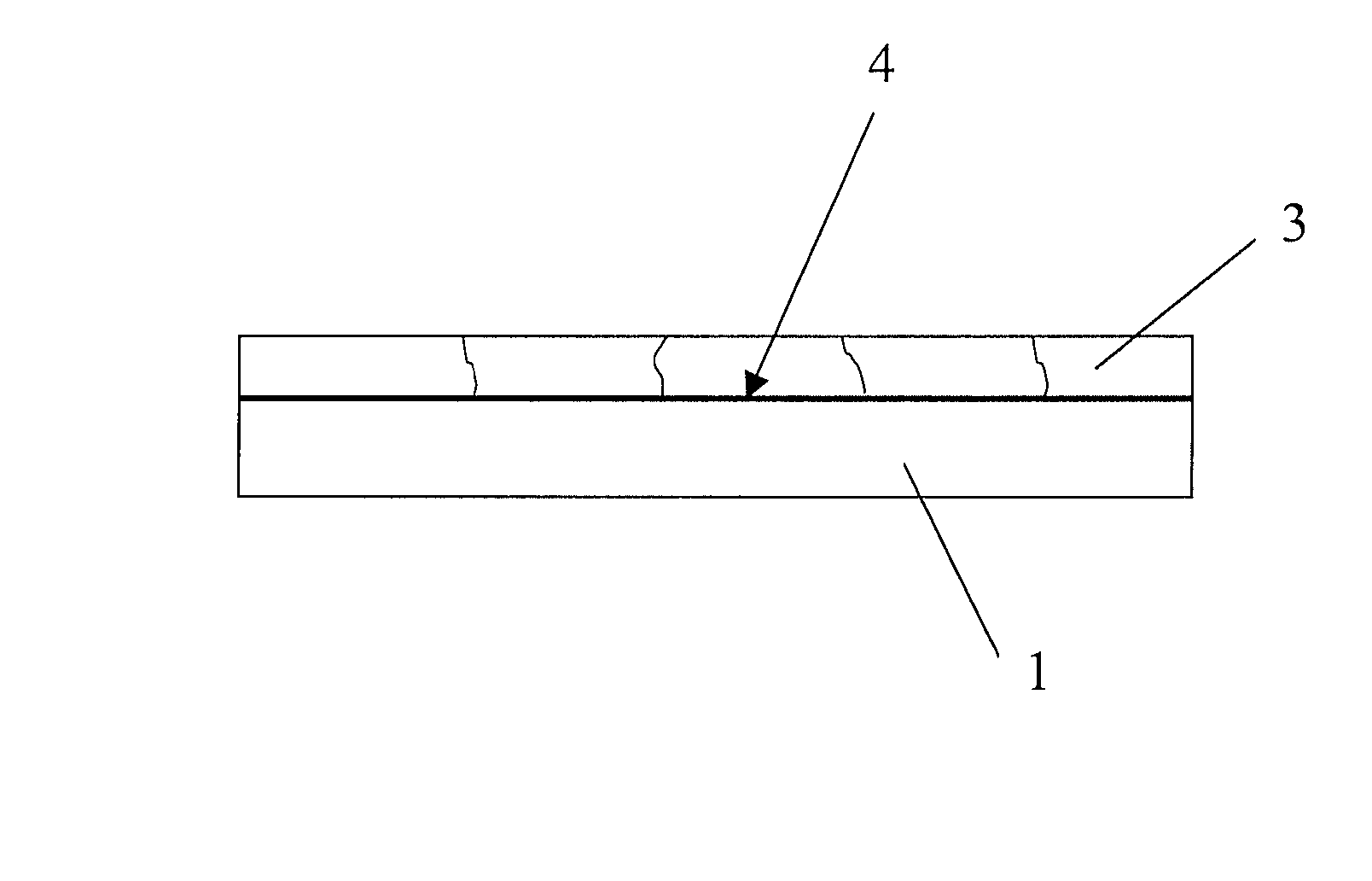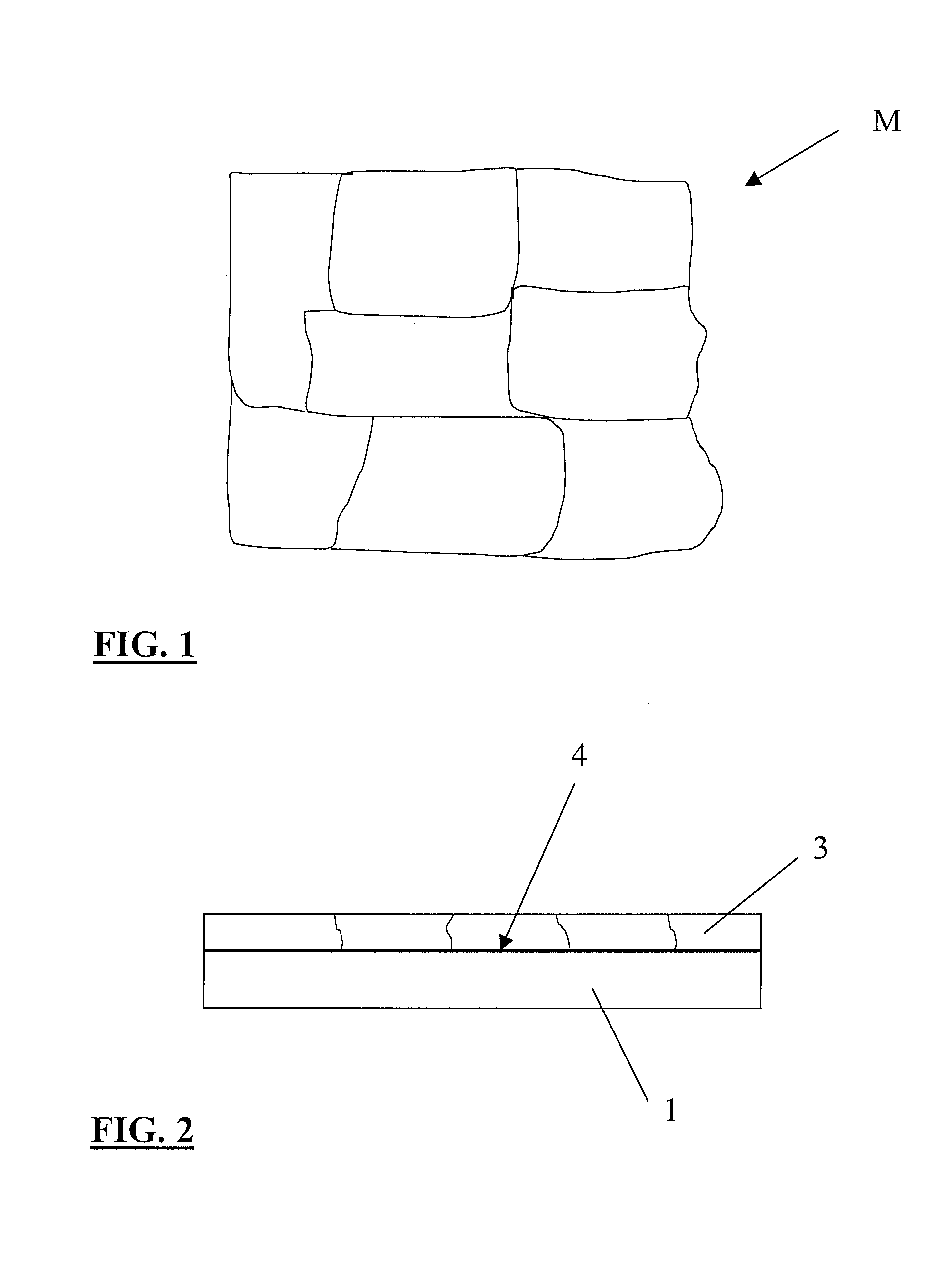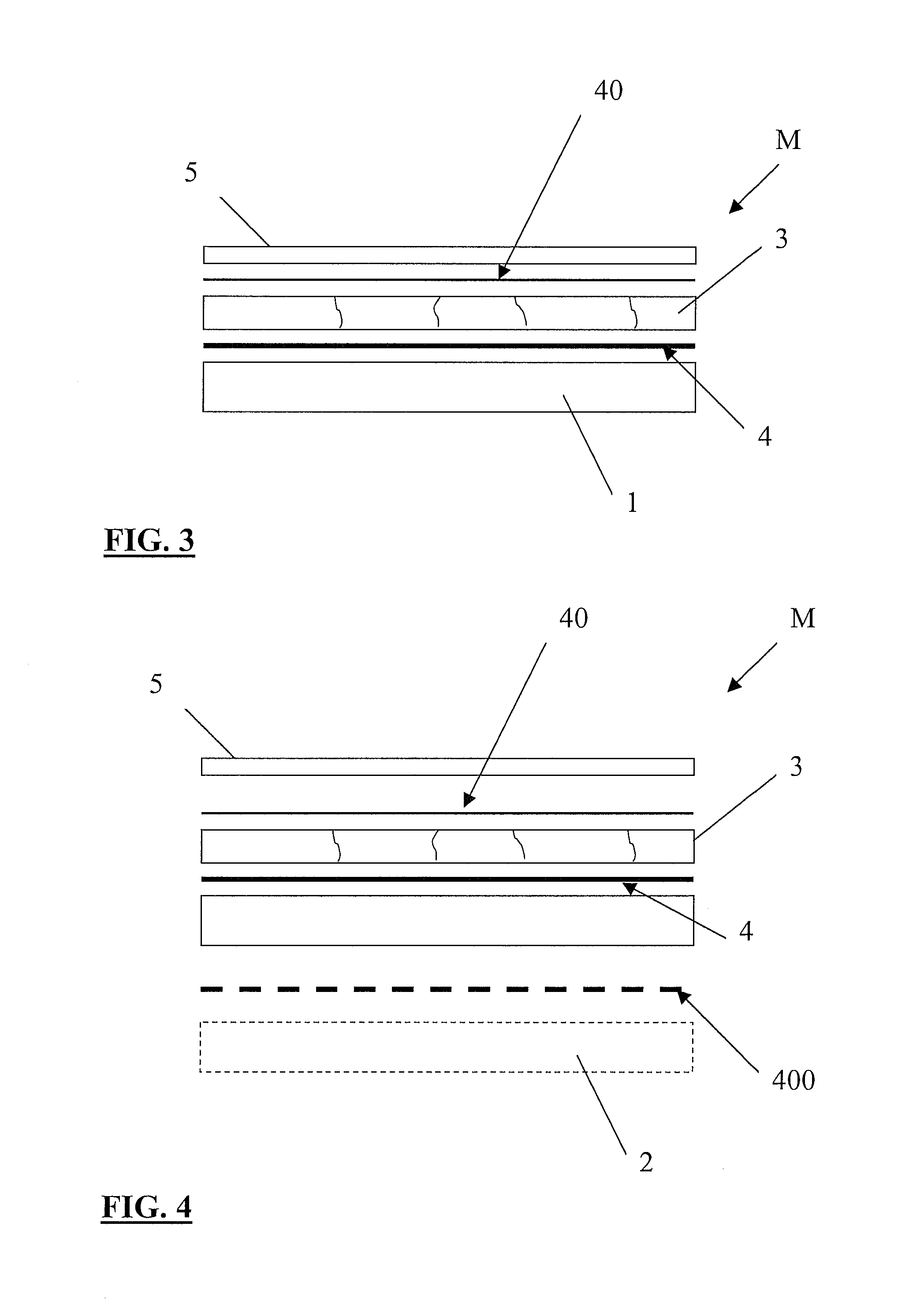Compound Material, In Particular For Clothes, Fashion Industry and Furniture
- Summary
- Abstract
- Description
- Claims
- Application Information
AI Technical Summary
Benefits of technology
Problems solved by technology
Method used
Image
Examples
Embodiment Construction
[0017]Having regard to the above mentioned Figures, reference (M) indicates the proposed compound material, particularly indicated for manufacturing of articles, accessories and inserts for fashion, clothes and furniture.
[0018]According to a preferred embodiment, shown in FIGS. 1 and 2, the proposed compound material (M) includes at least a first flexible support (1) of thermoplastic material, at least one covering layer (3), comprising a plurality of portions, close to one another and deriving from recycled materials, at least one first layer of glue (4), interposed between the first flexible support (1) and the covering layer (3), for mutual adherence thereof.
[0019]The covering layer (3) is laid on the first flexible support (1), covering it at least partially, preferably all of it.
[0020]The first flexible support (1) of thermoplastic material is made of one of the materials advantageously selected from the group including PE, PET, PVC, PP, PS, and can include either an interwoven...
PUM
| Property | Measurement | Unit |
|---|---|---|
| Flexibility | aaaaa | aaaaa |
| Transparency | aaaaa | aaaaa |
| Biodegradability | aaaaa | aaaaa |
Abstract
Description
Claims
Application Information
 Login to View More
Login to View More - R&D
- Intellectual Property
- Life Sciences
- Materials
- Tech Scout
- Unparalleled Data Quality
- Higher Quality Content
- 60% Fewer Hallucinations
Browse by: Latest US Patents, China's latest patents, Technical Efficacy Thesaurus, Application Domain, Technology Topic, Popular Technical Reports.
© 2025 PatSnap. All rights reserved.Legal|Privacy policy|Modern Slavery Act Transparency Statement|Sitemap|About US| Contact US: help@patsnap.com



